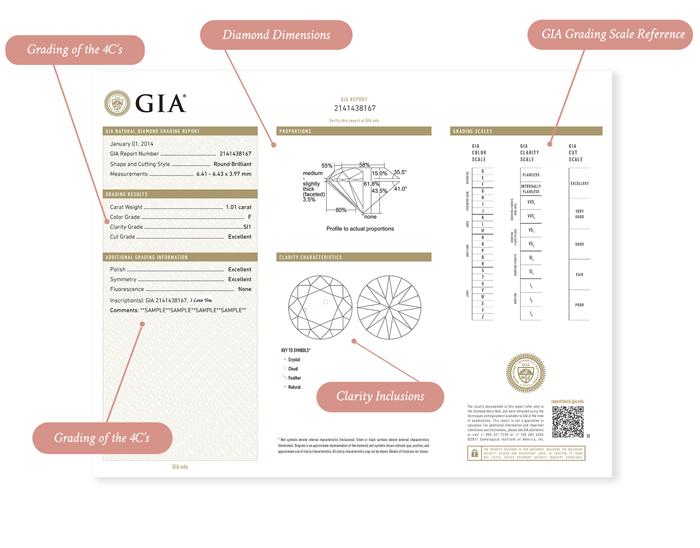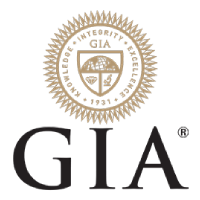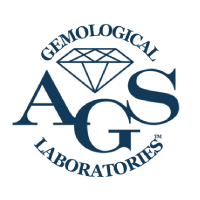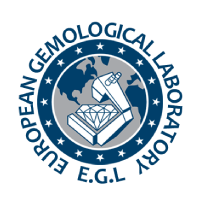8 Minute Read
Diamond Certification
When purchasing diamond jewellery, it’s important to be able to fully understand exactly what you are buying. Ensuring a diamond is certified by an independent and recognised laboratory is essential for an unbiased assessment of a stone’s quality which ultimately lends value and authenticity to your piece of jewellery.
Ensuring you’re getting a fair price for a quality item should be a priority when making your choice – which is why understanding and knowing what to look for when it comes to diamond certification is so crucial.
This simple guide provides all the hints and tips you’ll need to ensure your purchase goes smoothly…
What is diamond certification?
A Diamond Certification document is issued by a third party diamond laboratory, where experts have scrutinised and assessed the stone in question. The report describes the stone in full detail, giving you an assurance of quality as well as the diamond’s characteristics, such as its colour, size and clarity.
Each time you purchase a diamond you should receive this document – and it is always advisable to review it in detail before you make your purchase. Some jewellers will provide their own certificates, but, where possible it is a good idea to ask to see one from an impartial third party for independent validation of what you are buying. The example shown is of a certificate from the Gemological Institute of America (GIA) which is world renowned and very common.


What do gem labs like the GIA assess?
Here is an example of a GIA certificate. Generally gemology labs will assess diamonds on qualities such as their:
- Carat Weight
- Symmetry
- Cutting style and diamond shape
- Measurements
- Polish grade
- Cut grade
- Colour grade
- Clarity grade
- Fluorescence grade
- Quality in terms of blemishes or flaws
What should I look out for?
There are a number of different factors you should consider when reviewing a diamond certificate:

Lab Inconsistency
Not all lab certification is the same. Two different labs may rate things differently depending on their standards and practice, so what might initially seem like a bargain, may actually be because one lab has different standards to another.
Be mindful of this, research the certificating lab and view your diamond in person so you can make your own judgement too.

Human Subjectivity
Something else to keep in mind is that, as is common with assessments, there will always be some level of subjectivity. When qualities of a diamond are being judged by different individuals (and different labs), factors like colour and clarity are judged by eye.
To safeguard against this, your best bet is to ensure your stone has been certificated by a well known lab such as GIA or, view the stone in person yourself. Any jeweller will be happy to help you view the quality of your diamond in a showroom.

Overpricing
As you can already imagine reading this guide, valuing a diamond can be difficult. It’s rare but it has been known for labs to use less stringent testing measures to determine the quality of a diamond causing problems when a jeweller prices and sells the stone.
This is less likely to happen with well known labs and jewellers but it’s worth keeping in the back of your mind. To mitigate this, like each of these points, do your research and see the diamond for yourself. Also get your piece appraised by a gemologist as soon as it’s in your hand.
Diamond Certification Labs
We’ve spoken briefly about variance in gemological lab standards and procedures so here’s some more information about well known organisations to help you navigate:

The Gemological Institute of America
The 'GIA' is known for its consistency and reliability, and is the most well-respected of all the diamond certification bodies. Where possible, opt for a diamond certified by the GIA for the most trustworthy and quality assured purchase. If you want to, you could even have your diamond inscribed with your GIA report number, for verification in case of loss or theft.

The American Gem Society
The 'AGS' was the first body to assess diamond cut grades and is another reputable organisation to certify your diamond. Whilst AGS is not as popular as it used to be following the introduction of the GIA, a diamond with an AGS certificate is still quality assured and recognised for being a quality gem. AGS specialises in round diamonds in particular.

The International Gemological Institute
The 'IGI' is also a well-known organisation and used to be the most popular gem lab for a very long time. They often have good prices for their diamonds but work fast, meaning that their grading and assessment of diamonds can be less consistent than the GIA or AGS. Whilst you may feel that you’re getting a good bargain, an GIA or AGS certification would be more preferable.

The European Gemological Laboratory
The 'EGL' is another familiar lab you may come across, but unfortunately, one that should be avoided. Known for inconsistency and claiming quality standards that are severely inflated, customers purchasing from EGL may pay a lower price, but usually for an inferior stone. If you have a smaller budget, we would advise opting for a GIA diamond with a lower colour grade as opposed to a higher colour grade with an EGL certificate.

Hoge Raad voor Diamant
'HDR' is a recognised European grading organisation, but again is sometimes known for inconsistency and overstating the quality of its assessed diamonds. Do some more research about your diamond if it is certificated by the HDR.

Gemological Science International
New to the grading scene, 'GSI' are also known for having lesser standards and less consistency across their grades in comparison to GIA & AGS. We would highly recommend favouring a lesser graded GIA or AGS diamond over a higher graded GSI stone.
Frequently Asked Questions
Got more questions about diamond certificates? Here's some FAQ's to help.
A diamond certificate is the only way to know what you are actually buying – it’s proof from a third party that your diamond is real and verified, and it confirms details such as colour grade/clarity which can help inform the kind of diamond you want to buy, the price you should be paying and what you can resell your diamond for if you ever want to. It is proof that the diamond you are selling/buying is exactly what the seller claims it is.
Some advantages of certified diamonds include:
- They have a higher value than non-certified ones, especially when reselling or upgrading
- When using the same lab certificates, it is easier to compare different diamonds
- You can buy with confidence, knowing your diamond is real and of the quality you were expecting
- You can make good savings by understanding what you are investing in
- You are not likely to be scammed and can better protect your diamond going forward
Diamond certifications tend to come in two different forms – the Grading Report and the Diamond Dossier. A Grading Report includes the precise details and characteristics of the diamond, and also comes with a plotted diagram of these.
Whilst a Dossier contains the same sort of information, it does not include the plotted diagram. The Dossier will also often include the laser inscription number on the diamond’s girdle, for authenticity.
Diamond appraisals are often mixed up with diamond certifications, but the two are very different. The appraisal document only puts a numerical value on the diamond or jewellery piece, and is often used to assist with insuring the piece.
A certificate on the other hand doesn’t give a value, but is rather an impartial assessment of the qualities of the gem. An appraisal document is not a replacement for a diamond certificate and you should always ask for both when possible, most importantly the certificate.
Fancy colour diamonds receive a different kind of report, that focuses on their specific hue and saturation. Because of their rarity and value, only ever purchase a fancy diamond from a reputable jeweller.
Diamonds mounted in rings cannot be graded unless they are separated from the mount so they can be assessed from all angles, so consider if you are prepared to do this. When buying a diamond, if possible, aim to ascertain its quality before it is set as jewellery.
Still need help?
If you need any further assistance with diamond certificates, our jewellery experts are here to help! Visit us in store or call us to arrange an appointment so we can provide the guidance you need. You can also send a message via zendesk in the bottom right of your screen.
Libby Johnson
Director, Johnsons Jewellers




